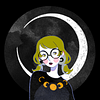Take a photo of a barcode or cover

fairybookmother 's review for:
Making the Monster: The Science Behind Mary Shelley's Frankenstein
by Kathryn Harkup
3.5/5 stars
Mary Shelley's Frankenstein is one of my favorite books of all time, and definitely in my list of top ten classics. So when I saw Kathryn Harkup's Making the Monster beginning to make its rounds on Twitter and Instagram, I added it to my TBR and wishlist and waited for a good sale because based on the cover and title alone, I wanted it for my own collection.
I love literary histories like these that give the reader an insight into the creation of the novel while also providing context for the scientific aspects of Frankenstein. Sometimes I felt that the structure of the book could be better managed, but overall, I thought that the back and forth between Mary Shelley's life and the real-life science that inspired the science in her novel worked effectively. Harkup's book is incredibly well researched, and her meticulous attention to detail adds so much to the experience of reading this. For someone like me who isn't wholly aware of a lot of medical and science history, the chapters focusing on the medical and science history were the most chilling and most engaging, especially the chapter regarding autopsies and the lucrative business surrounding the digging up of cadavers to sell to institutions of higher learning.
The main issue I had with the book were the biographical sections involving Percy and Mary Shelley because a good portion of those sections read as if they had been poorly edited or were a draft that could have easily been tightened up or finished off. I think Harkup's strengths lie in scientific writing that is readily based upon set-in-stone information, whereas biographies do require a little more finesse in terms of narrative structure. For example, a lot of sentences in the biography sections ended with prepositional phrases and included digits instead of spelled out numerals for numbers under 100. Several sentences contained dangling participles, and I had to reread the sentences several times to be sure what the "it" was in the second half of the sentence. These are my editorial quibbles from my days editing student essays, so my reading experience is jarred when I notice these things in published works.
Overall, the science and medical histories and the biographies in Making the Monster are accessible to a variety of readers, whether or not they are familiar with Shelley's Frankenstein. If you're interested in the sometimes gruesome practices in the history of medicine and/or enjoy literary biographies, I recommend checking this one out!
Mary Shelley's Frankenstein is one of my favorite books of all time, and definitely in my list of top ten classics. So when I saw Kathryn Harkup's Making the Monster beginning to make its rounds on Twitter and Instagram, I added it to my TBR and wishlist and waited for a good sale because based on the cover and title alone, I wanted it for my own collection.
I love literary histories like these that give the reader an insight into the creation of the novel while also providing context for the scientific aspects of Frankenstein. Sometimes I felt that the structure of the book could be better managed, but overall, I thought that the back and forth between Mary Shelley's life and the real-life science that inspired the science in her novel worked effectively. Harkup's book is incredibly well researched, and her meticulous attention to detail adds so much to the experience of reading this. For someone like me who isn't wholly aware of a lot of medical and science history, the chapters focusing on the medical and science history were the most chilling and most engaging, especially the chapter regarding autopsies and the lucrative business surrounding the digging up of cadavers to sell to institutions of higher learning.
The main issue I had with the book were the biographical sections involving Percy and Mary Shelley because a good portion of those sections read as if they had been poorly edited or were a draft that could have easily been tightened up or finished off. I think Harkup's strengths lie in scientific writing that is readily based upon set-in-stone information, whereas biographies do require a little more finesse in terms of narrative structure. For example, a lot of sentences in the biography sections ended with prepositional phrases and included digits instead of spelled out numerals for numbers under 100. Several sentences contained dangling participles, and I had to reread the sentences several times to be sure what the "it" was in the second half of the sentence. These are my editorial quibbles from my days editing student essays, so my reading experience is jarred when I notice these things in published works.
Overall, the science and medical histories and the biographies in Making the Monster are accessible to a variety of readers, whether or not they are familiar with Shelley's Frankenstein. If you're interested in the sometimes gruesome practices in the history of medicine and/or enjoy literary biographies, I recommend checking this one out!